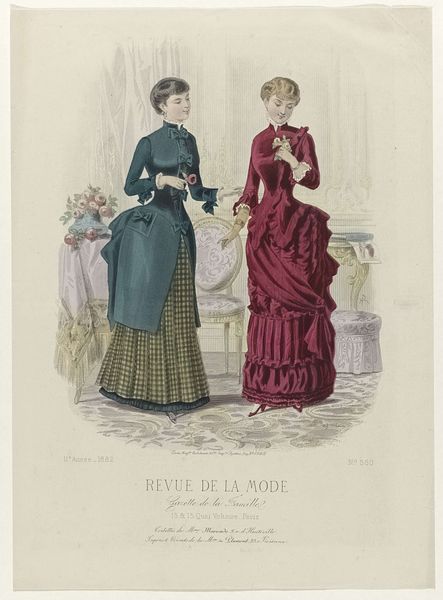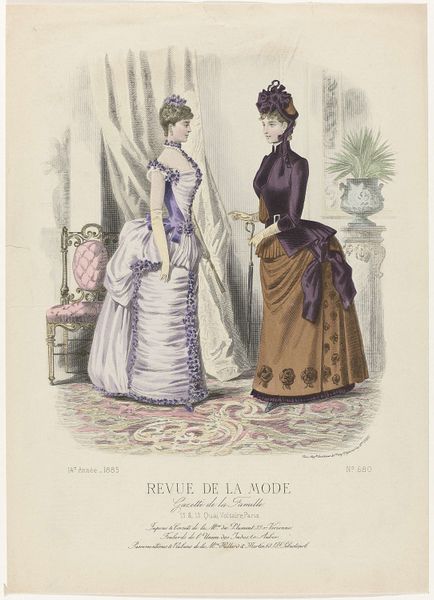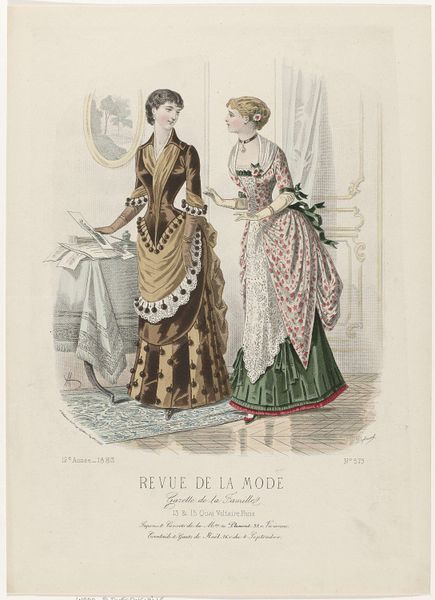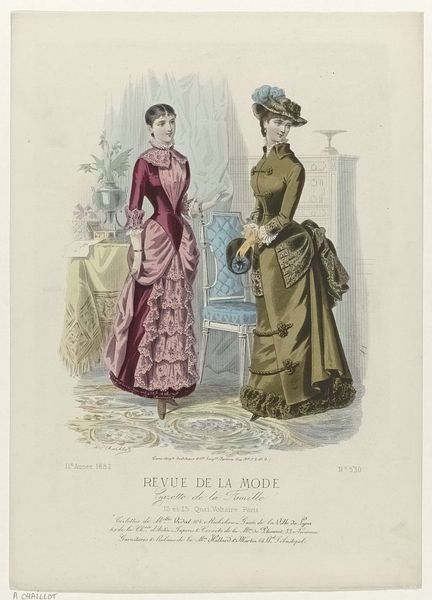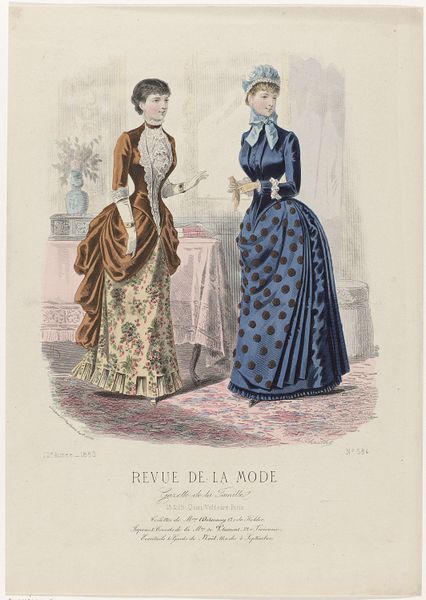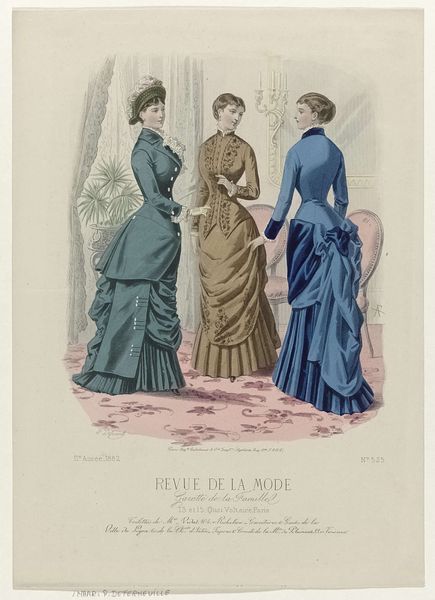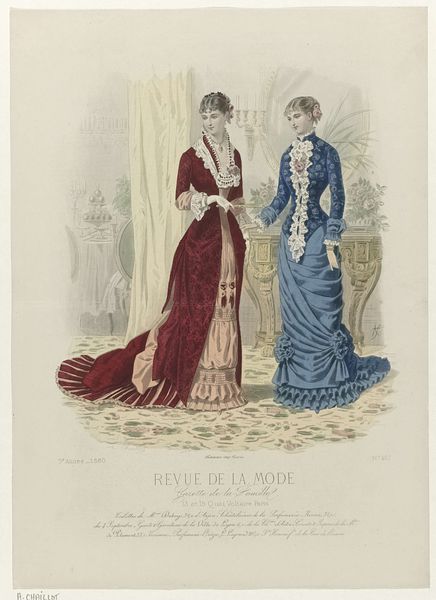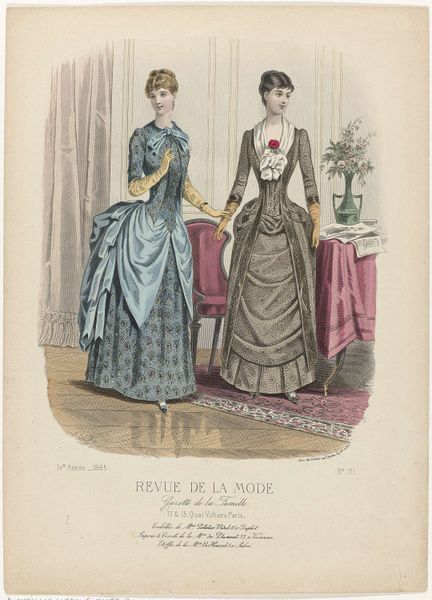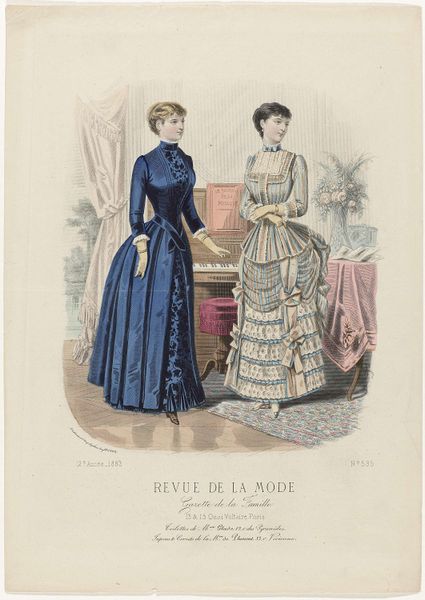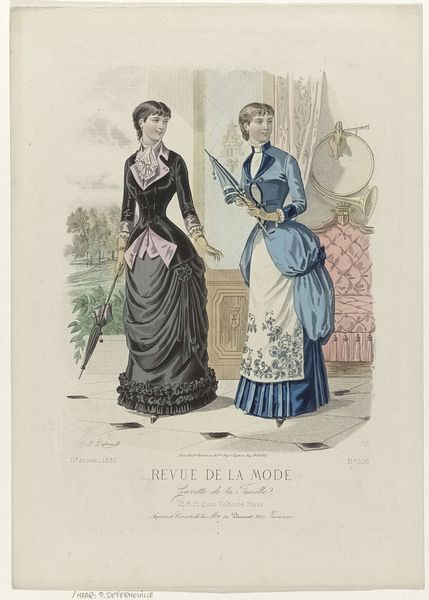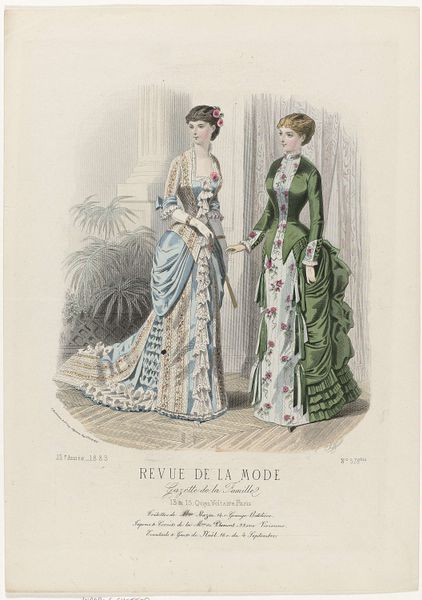
Revue de la Mode, Gazette de la Famille, dimanche 10 septembre 1882, 11e année, No. 558: Toilettes de Mme Bardé (...) 1882
0:00
0:00
Dimensions: height 380 mm, width 270 mm
Copyright: Rijks Museum: Open Domain
Curator: This watercolor illustration is a fashion plate from an 1882 issue of *Revue de la Mode*. The artist, E. Cheffer, captured two strikingly different dress styles. Editor: Immediately, the ruffles of the blue dress seize my attention. They form layer upon layer, each a scalloped echo of the one above, culminating in this cascading spectacle of Victorian ornamentation. Curator: Fashion plates served a crucial purpose then, not just as aspiration but as coded messaging, right? Beyond mere trends, dress was—and is—always about societal standing, gender roles, and access. That blue dress, with its abundance of lace, signals wealth and leisure. Editor: Absolutely. Blue was also culturally tied to fidelity and stability. But observe the woman wearing the tan dress; her gown's relatively subdued color palette is offset by the bold plaid accents, evoking perhaps a more active lifestyle, yet one still firmly within the bounds of acceptable femininity. The symbols embedded within, almost unconsciously, speak of complex societal expectations. Curator: Right, and who has access to 'activity' or to different spheres of life? Even the jewelry box, slightly ajar, whispers of secrets and commodities only accessible to a select few. Look at the waist, too, constricted on both figures: a daily pressure experienced, predominantly, by women. These aren’t simply pretty pictures; they’re documents reflecting social norms of the time. Editor: Even the interior acts as a supporting character. The almost translucent drapes add an ephemeral, dreamlike quality to the scene. One has a sense, looking back through our current cultural lens, that beneath the surface gloss, societal constraints lingered in ways visible through these seemingly harmless sketches. Curator: Exactly. Considering our present lens, one sees that objects that initially seem like beauty standards in fact speak to how class, race, and gender intersect. Fashion, then and now, becomes a battlefield of self-expression and regulation. Editor: Looking back through a perspective that allows one to consider identity, one can examine the impact that clothing might have in projecting and shaping how one presents themselves. Curator: Indeed, revisiting pieces such as these prompts us to decode the languages of appearance, in the past and in the present, interrogating why, still, presentation continues to be bound to social structures. Editor: Thank you. It highlights how seemingly superficial visual artifacts encapsulate enduring historical and cultural conversations about the human spirit.
Comments
No comments
Be the first to comment and join the conversation on the ultimate creative platform.
